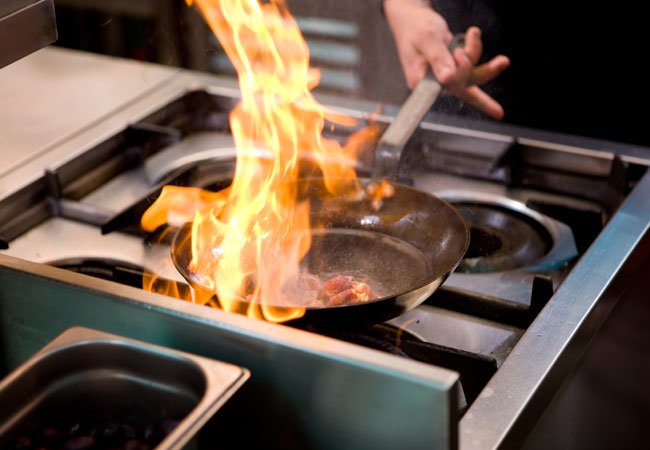We may earn revenue from the products available on this page and participate in affiliate programs. Learn More ›
If perfectly golden casseroles, rolls, and side dishes seem out of reach, a deeper understanding about bakeware materials might help. Different materials affect how bakeware functions during the cooking process. The recipe used and the particular dish in question may heat more evenly or quickly with a different material. For better results, here’s the lowdown on glass, metal, and ceramic bakeware, and find out when it’s best to use each of them.
Each material conducts heat differently.
The results of a recipe may vary depending on the cookware’s material, as each kind reacts to heat in a different way.
- Glass doesn’t conduct heat well. Consequently, it takes longer to heat than metal or ceramic. However, it holds that heat longer, providing consistency in the bakeware’s temperature throughout the baking process. Even when oven temperatures fluctuate, which they do, glass bakeware will maintain a relatively consistent temperature.
- Metal conducts heat more readily than glass or ceramic, helping it to heat faster. That quick heat absorption works well for foods that need to rise. It also lends itself toward beautifully browned crisp edges and crusts.
- Ceramic cookware is usually a mix of different materials, which causes varying levels of conductivity from product to product. It’s a natural material that maintains an even temperature once it’s heated, and tends to more readily conduct heat than glass. However, it is slower to absorb heat than metal. Ceramic also withstands different cooking methods like microwaving, slow cooking, and stewing.
RELATED: The Best Baking Pans for the Kitchen
When to Use Glass
Glass works well for newer cooks because it allows visual cues to “doneness.” While pie crusts, in particular, may be difficult to time at first, the glass allows you to see when the crust is done before it’s burnt. Glass’s ability to hold a consistent temperature also works well for casseroles, roasting, and thick dishes like lasagna.

When to Use Metal
Metal heats and cools quickly. It also reaches temperature fast, which helps the rising stage of baking bread, cakes, and cookies. Its fast heating also crisps and browns edges. However, unlike glass or ceramic bakeware, food should not be stored in metal because it has a porous surface. Avoid using tomatoes or citrus in metal bakeware, too, because the acid can react with the metal.

When to Use Ceramic
Ceramic functions much like glass in that it’s slower to heat than metal and holds that heat for a long time. It evenly distributes that heat for cooking casseroles and thick recipes. Its nonporous surface also is safe to store food, reducing clean-up work. Ceramic comes in different colors and designs, making it a visually pleasing option.

Cleaning Considerations
The easiest option for cleanup is glass, because it’s dishwasher safe. Ceramic can withstand scouring pads and dish soap, so baked-on food usually comes off relatively easily. Of the three options, metal is the most difficult to clean. Food sticks and the high temperatures of a dishwasher can damage nonstick surfaces. Use shortening or a cooking spray on the bakeware before cooking to prevent sticking. If food does stick, it may take some soaking to remove the food.
RELATED: The Best Baking Sheets for Your Cookware Collection
Storage Considerations
After cooking and cleaning, storing is another consideration that can make one type of cookware better for your kitchen lifestyle.
- Metal takes the prize for storage ease. It’s lightweight and doesn’t break when dropped. However, it is susceptible to denting or scratching, which can damage a nonstick coating.
- Glass can shatter with extreme temperature changes and it can chip or shatter when dropped, which is why most glass bakeware is made of tempered glass. It’s also heavier than metal.
- Ceramic chips the easiest of all. It’s a fairly delicate material, which can make storage a bit of a hassle, too. You have to be careful how and what is stored on or near it to help prevent chips and scratches.

















